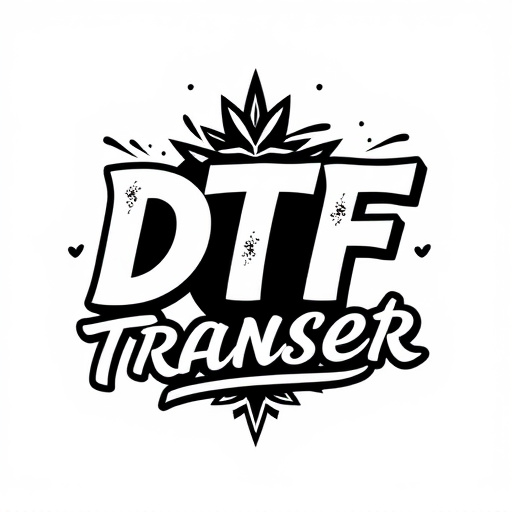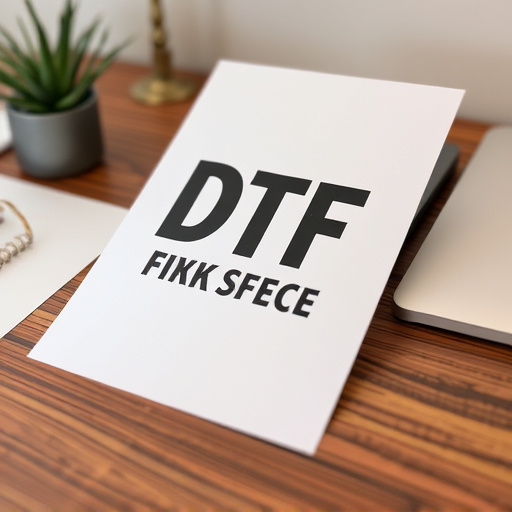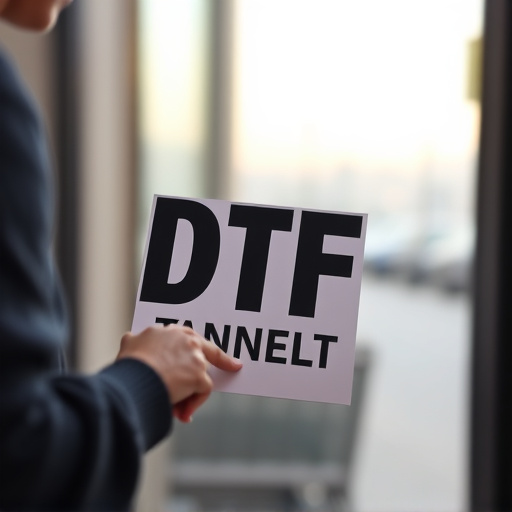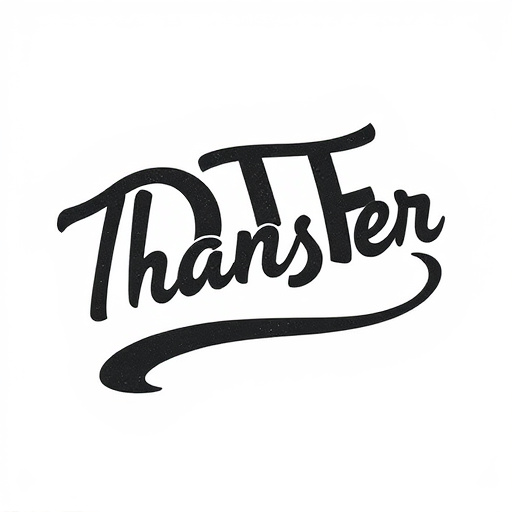Carrier film, a critical component in Direct to Fabric (DTF) transfers, protects fabric during printing and ensures precise ink transfer. Proper removal is vital for maintaining print quality and durability. Challenges include varying film types, residue, and adhering adhesive. Techniques involve using solvents like alcohol or acetone, heat, or a warm water soak (40-50°C for 10-15 minutes) to weaken the adhesive. Precision during removal is crucial for intricate DTF designs, preserving their aesthetic appeal for decorative or functional use.
After applying a DTF (Direct to Fabric) transfer, the carrier film must be meticulously removed to reveal the vibrant print beneath. This guide explores effective techniques for stripping away this protective layer, from simple warm water soaks to solvent cleaning and chemical strippers. Understanding why and how to remove the carrier film is crucial for achieving high-quality DTF prints, ensuring the longevity of your fabric designs.
- Understanding Carrier Film in DTF Transfers
- Reasons for Removing Carrier Film
- Common Challenges in Removing Carrier Film
- Effective Techniques for Carrier Film Removal
- a. Warm Water Soak
- b. Solvent Cleaning
Understanding Carrier Film in DTF Transfers

Carrier film plays a crucial role in Direct to Fabric (DTF) transfers, acting as a protective barrier between the design and the fabric during printing. This thin, flexible sheet is applied to the fabric before DTF printing, ensuring that ink adheres only to specific areas intended for the design. Once the transfer process is complete, the carrier film must be carefully removed to reveal the vibrant, high-quality DTF prints on the fabric surface.
Understanding the composition and function of carrier film is essential for successfully removing it without damaging the print. The film is typically made from a durable, heat-resistant material that allows for precise ink transfer while protecting the fabric from direct contact with the printing plate or stylus. After the ink has cured and set into the fabric fibers, the carrier film can be peeled away, leaving behind a crisp, clear image that will withstand washing and wear.
Reasons for Removing Carrier Film

After a DTF (Direct to Film) transfer application, there’s a crucial step in the process: removing the carrier film. This film serves its purpose by protecting the delicate DTF prints during application but needs to be eliminated to ensure optimal print quality and durability. Leaving the carrier film intact can lead to several issues for the final product.
First, the film might interfere with the bonding process between the printed surface and the final medium, whether it’s fabric, wood, or glass. This can result in a less secure attachment, causing prints to peel or fade over time. Second, residual adhesive from the carrier film can mar the appearance of the DTF prints, creating unappealing streaks or spots that compromise the overall aesthetic quality. Removing the carrier film allows for a clean, crisp finish, enhancing the visual impact of DTF prints, be it for decorative purposes or functional applications like signage and textiles.
Common Challenges in Removing Carrier Film

Removing carrier film after a DTF (Direct to Film) transfer application can be a delicate process, often presenting several challenges for printers and applicators. One of the primary difficulties lies in achieving complete removal without damaging the underlying DTF prints or the substrate material. The carrier film, designed to protect the print during application, can leave behind residue or adhere strongly to the surface, making it hard to peel away cleanly.
Another common challenge is ensuring even and thorough removal, especially in intricate designs with small details. Uneven removal can result in visible remnants of the carrier film, compromising the aesthetic appeal of the final product. Additionally, different types of carrier films have varying characteristics, including thickness, adhesiveness, and release agents, which can affect the ease and effectiveness of their removal.
Effective Techniques for Carrier Film Removal

After applying a DTF (Direct to Film) transfer or print, removing the carrier film is crucial for achieving a permanent and high-quality finish on your final product. Effective techniques for carrier film removal include using specialized solvents like alcohol or acetone, which can dissolve the adhesive holding the film in place. Applying heat with a heat gun or iron can also help loosen the film, but it’s essential to be careful not to damage the underlying material.
For best results, start by gently peeling away a small corner of the carrier film to assess its adhesion. If it sticks firmly, apply the chosen solvent directly onto the film and let it sit for a few minutes to allow penetration. Then, using a clean cloth or scraper, carefully wipe away the film, ensuring no residue remains. This process requires precision and patience, especially on intricate designs, but it’s a vital step in achieving crisp, long-lasting DTF prints.
a. Warm Water Soak

One effective and straightforward method for removing carrier film after a DTF (Direct to Film) transfer application is to employ a warm water soak. This simple technique involves submerging the printed material in warm water for a set duration, allowing the adhesive properties of the carrier film to weaken significantly. Warm water aids in breaking down the bond between the film and the print, making it easier to peel away without causing damage to the DTF prints or the substrate below.
For optimal results, maintain a consistent temperature around 40-50°C (104-122°F) for approximately 10-15 minutes. This range is crucial as it ensures thorough softening of the adhesive without overheating, which could potentially distort or discolor the DTF prints. After soaking, gently scrape off the film using a soft-tipped tool, taking care to avoid scratching the delicate surface of the transferred image.
b. Solvent Cleaning

After applying a DTF (Direct to Film) transfer, one common challenge is removing the carrier film without damaging the printed DTF prints. Solvent cleaning offers an effective and precise method for achieving this. By immersing or wiping the area with specific solvents, such as alcohol or acetone, the adhesive holding the carrier film can be broken down and dissolved, allowing for easy removal. This technique requires caution and a fine touch to prevent any contact with non-target surfaces, ensuring only the carrier film is eliminated.
For optimal results, choosing the right solvent for your DTF printing material is crucial. Different carriers may require distinct solvents, so checking the manufacturer’s guidelines is essential. Solvent cleaning provides a detailed approach to post-application care, leading to crisp and clear DTF prints without any residual films obscuring their beauty.














